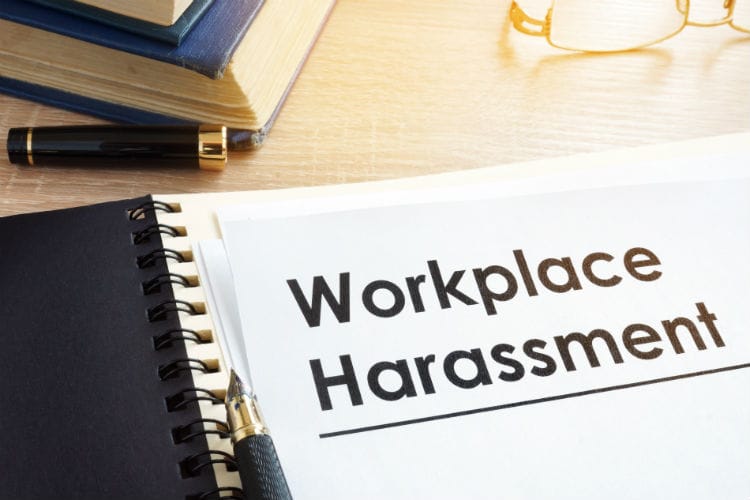Legal
Key Elements of Complying With State Sexual Harassment Prevention Requirements
By Tammy Tyler
Dec. 18, 2018
Sexual harassment has been a constant topic of discussion in the media, in the workplace and around dinner tables since the rise of the #MeToo movement in late-2017. Employers and employees alike have questioned what this societal shift means for their workplace interactions and responsibilities.
Though the issue remains at the forefront of the news cycle, many alleged sexual harassment incidents aren’t widely known or reported. State legislators are working to change that. More than 30 jurisdictions have introduced more than 100 pieces of legislation in 2018 toward sexual harassment prevention.
One of the first goals of these state mandated sexual harassment prevention policies is general education, making sure everyone is aware that sexual harassment is prohibited and to provide a definition of what it may include. Sexual harassment is a broad but very fact-specific form of discrimination that can include:
- Unwanted verbal or physical sexual advances.
- Sexually explicit statements.
- Sexually oriented gestures, noises, remarks, jokes or comments.
- Remarks the recipient feels are offensive or objectionable.
- Sexual or discriminatory displays/publications anywhere in the workplace.
- Other harassing or hostile conduct that’s directed at recipients because of their sex.
All of the above may be considered examples of sexual harassment. Offering such examples is a significant item in the list of minimum standards New York is requiring of all anti-sexual harassment policies. Policies must also outline federal and state statutory provisions, and include remedies available to victims, procedures for a timely investigation and a complaint form for employees.
Also read: #MeToo — Movement or Moment?

It’s important to note that sexual harassment can be overt (such as inappropriate touching, unwanted sexual advances or telling of crude jokes) or subtle (including interfering with an individual’s ability to perform their job because of their gender). An employee can be sexually harassed by a supervisor, subordinate, employee, intern, independent contractor, temporary or contract worker, vendor, client, visitor or customer.
Another key principle of much of the anti-sexual harassment legislation introduced this year is training. In New York, for example, all employers must provide annual interactive sexual harassment prevention training for every one of their employees working in the state — including part-time, seasonal and temporary employees. The initial training must be completed by October 9, 2019. The training must be interactive, should be provided in the language the employee speaks, and — according to the guidance — must include the following components:
- An explanation of sexual harassment consistent with guidance issued by the Department of Labor in consultation with the Division of Human Rights.
- Examples of conduct that would constitute unlawful sexual harassment.
- The federal and state statutory provisions concerning sexual harassment and remedies available to victims of sexual harassment.
- Employees’ rights of redress and all available forums for adjudicating complaints.
- Addressing conduct by supervisors and any additional responsibilities for such supervisors (note that all employees must be trained on this content, not just supervisors).
Though compliance with the new policy and training requirements for sexual harassment prevention can seem daunting, the New York State Department of Labor in consultation with the New York State Division of Human Rights has provided model materials that employers and HR managers can use to comply with the requirements in the state. The potential costs of a sexual harassment complaint against a business can be steep, so it’s in everyone’s best interest to be compliant with sexual harassment prevention training requirements. The typical harassment claim can take nearly 318 days to be settled, according to the 2017 “Hiscox Guide to Employee Lawsuits,” and some estimates place the average legal costs to defend and settle a claim to be upward of $160,000. Not to mention the irreparable damage a sexual harassment claim can have on your company’s reputation and the morale and productivity of the workplace.
Also read: Addressing #MeToo in the Workplace and HR’s Response
In addition to model materials and other guidance that may be provided by enforcing agencies to help employers meet the state’s unique requirements, businesses can also turn to an HR services provider to help them comply with new or existing provisions. State-specific requirements can be both comprehensive and complex. Even the most seasoned HR professional will likely have questions around the specific components of their state-mandated notice, policy and education programs. A reputable HR services provider will have a team of compliance experts on staff to help businesses ensure their policies and practices align with the requirements of their particular state (or states if they operate in multiple locations).
No matter where your organization does business, part of your HR role is to adopt and implement policies and procedures to prevent and address sexual harassment in the workplace. More importantly, promoting an inclusive culture of respect and free from sexual harassment can be essential in maintaining an engaged and productive workforce and even attracting the right talent to the organization.
This content is for educational purposes only, is not intended to provide specific legal advice, and should not be used as a substitute for the legal advice of a qualified attorney in your state. The information in this article may not reflect the most current legal developments, may be changed without notice and is not guaranteed to be complete, correct or up to date.
Schedule, engage, and pay your staff in one system with Workforce.com.